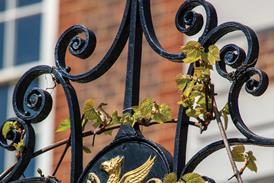Climate change will have a profound effect on global winemaking.
It used to be only the British that talked about the weather. Now, rather like the late Victorian field sports we exported across the world, talking about the climate appears to have become a global pastime.
In the past 18 months, I have visited vineyards in Chile, France (Champagne, Bordeaux, Burgundy), India, Italy, South Africa and England. Hot on the lips of every winemaker with whom I have spoken is climate change. Many of them are reluctant to talk publicly about the issue, but behind closed doors, when the day’s work is done, they open up and tell of their fears for the future.
They have good reason to be worried. Scientists at NASA, who spend billions of dollars forecasting complex weather patterns, have warned that by 2013 – just five years away – the ice cap over the North Pole will have melted.
Of course any forecast should be taken as just that – a forecast. Will it happen? Who knows, but my own observations, taken from interviews with winemakers working the vineyards in the countries mentioned above, suggest that climate change is already here.
Four years ago in the vineyards of Ridge, high above the Napa Valley, winemaker Paul Draper instructed his team to begin picking on 17 August. It was four weeks ahead of schedule – the earliest in the winery’s 43-year history. Ridge was not an isolated case. Across the state, winemakers and vignerons were forced to react to an unprecedented March heatwave in which temperatures soared to 83F (28C). In Napa, talk now is of a major shift in wine-growing seasons.
A year earlier, France had recorded one of its hottest years on record. In the vineyards surrounding Bordeaux, winemakers talked of ‘oven-like temperatures’. The red wines initially achieved favourable reviews. Tasting them now they show a stewed, baked character; the acidity is less pronounced. Against a decade of vintages they taste uncharacteristic, and in my opinion these wines will not age particularly well. In Bordeaux, they refer to the 2003 vintage as ‘special’. Read into that what you will.
This year, New York and London both recorded temperatures of 17C in February – the hottest February days on record. But climate change is not just about the world getting hotter. Springs are sunny and warm, summer months are cloudy and wet, the growing seasons are longer, temperature during ripening is hotter, and there is less frost. All of this will be, in the words of Dr Richard Smart, one the world’s leading vineyard consultants and an expert in wine and climate change, ‘the biggest factor ever to affect the wine industry’.
If there is a consensus it is that the temperature will rise throughout the growing season by between 2C and 4C over the next 50 years. Between 1950 and 2004, we saw an increase of 1.7C. The beneficiaries of this rise will be northern European countries such as England, Germany, Sweden, Denmark, Finland and Ukraine. Even territories as geographically diverse as Patagonia, Nova Scotia and Scotland may benefit. In the Rhine and Mosel areas of Germany – two grape-growing regions with cool climates – grape quality has markedly improved in recent years. Southern England has also benefited – a thriving winemaking region, it now produces world-class sparkling wine (see [2008] Gazette, 21 August, 42).
France’s traditional wine-growing areas, such as Bordeaux, Burgundy, Champagne and the Rhone Valley, will be seriously affected. Bordeaux’s present climate is arguably as good as it will ever get. A string of stunning vintages from the early 80s, as well as what many describe as ‘vintages of the century’ in 2000 and 2005, have seen vignerons actually benefiting from the slight rise in temperature since the Second World War.
Gregory V Jones, a climatologist at Southern Oregon University, one of the world’s leading experts in wine-region climate studies, says: ‘You can honestly argue that Bordeaux is better off today. They can now consistently ripen their grapes.’ Jones argues that there will be even more pronounced warming in southern France, in parts of eastern Washington and in central California. Temperatures in Spain and Portugal may increase more than five degrees. If this is the case, those wines with high altitude will survive, while all others need not apply.
If the projections are true, some of the world’s great wine-growing areas will be severely affected.
Consider Burgundy. This thin, 30-mile strip of land, that begins just south of Dijon and ends in Chalon-sur-Saône and is no more than 1,500 metres wide at any given point, produces some of the world’s most hauntingly inviting wines. Villages such as Gevrey-Chambertin, Vougeot, Meursault and Puligny-Montrachet produce wines unrivalled in quality and price, teasing out the best of pinot noir and chardonnay – the two primary grapes that are grown in the region. A rise of 2C will make it as hot as the southern Rhone. Traditional pinot noir producers will migrate to countries such as Holland and Belgium. Parts of Bordeaux will be forced to experiment with grapes used to severe heat, such as touriga nacional, which is a key component of port.
But it is not all bad news. Styles change with history. What has been the lifeblood of the German wine industry – riesling, pinot gris and gewürztraminer – will simply make way for merlot and cabernet franc. My advice would be to run with it, but you may want to stock up on those Pomerols from Bordeaux, they might be collectors’ items just a little sooner than you think.
Wine of the week
Dr Loosen Riesling 8.5%, Mosel, GermanyThe tall, thin light-green bottle is unmistakably from the Mosel. Ernie Loosen is one of the region’s best-known and reliable producers. Oozing character, these wines scintillate the palate, being light and pure.£6.79
•••••••
Chateau Saint Jean des GravesAn enormously clean blend of sauvignon blanc and semillon. This possesses that wonderful herbaceous nose I referred to in the main piece and has an attractive European feel. An ideal wine to accompany the descent into autumn.£6.99
•••••••
2008 McGuigan Discover, Pinot Grigio, Australia
Zippy and clean with an attractive crispness. Pop this in the fridge and serve as an aperitif. With an attractive, moreish citrus kick. £5.99
•••••••
Stockists: Sainsbury’s, Waitrose, Tesco
Will Lyons is wine correspondent for Scotland on Sunday newspaper. He recently won the 2008 Louis Roederer UK Regional Wine Writer of the Year award.



























No comments yet